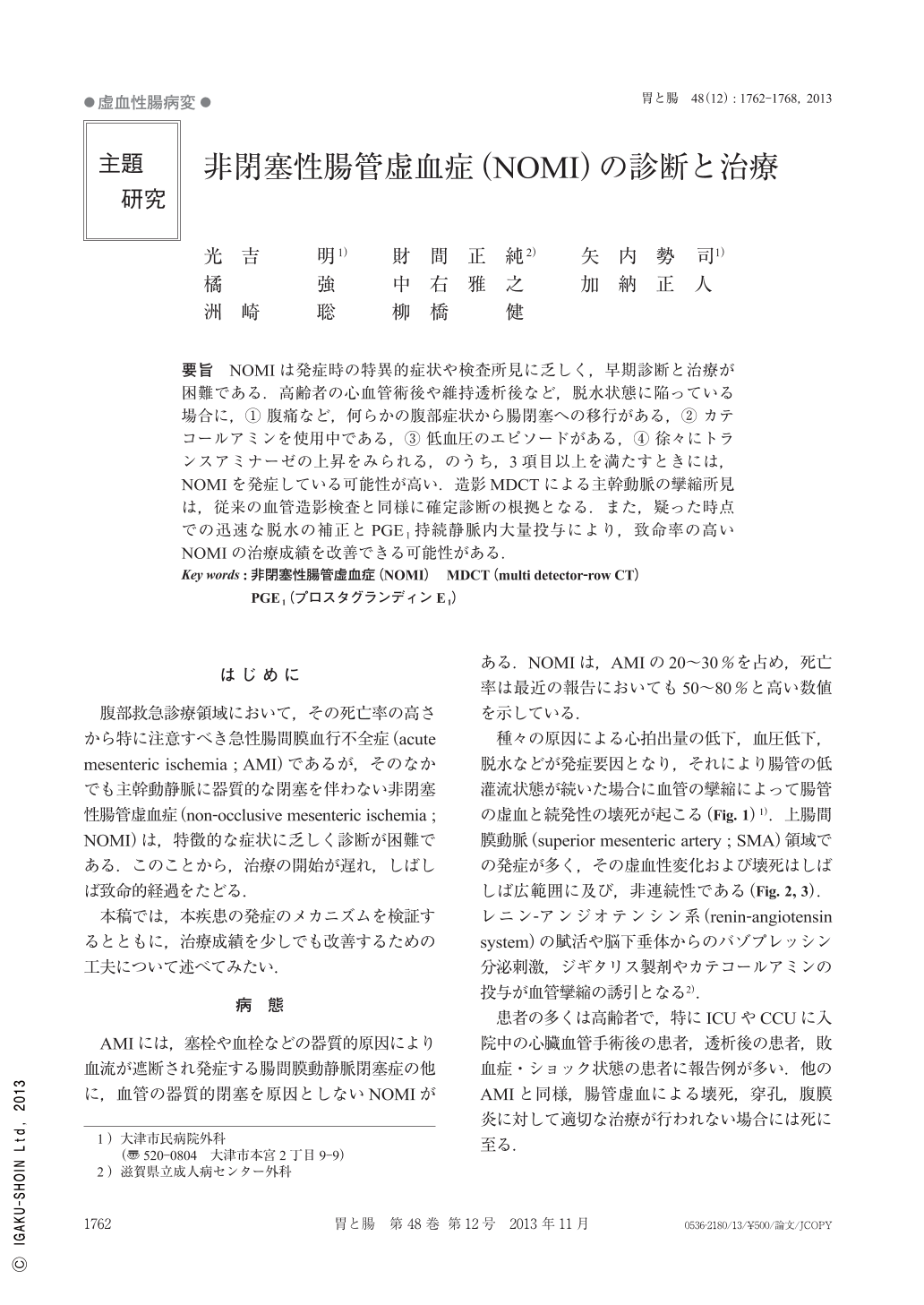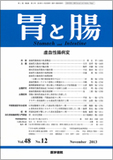Japanese
English
- 有料閲覧
- Abstract 文献概要
- 1ページ目 Look Inside
- 参考文献 Reference
- サイト内被引用 Cited by
要旨 NOMIは発症時の特異的症状や検査所見に乏しく,早期診断と治療が困難である.高齢者の心血管術後や維持透析後など,脱水状態に陥っている場合に,(1)腹痛など,何らかの腹部症状から腸閉塞への移行がある,(2)カテコールアミンを使用中である,(3)低血圧のエピソードがある,(4)徐々にトランスアミナーゼの上昇をみられる,のうち,3項目以上を満たすときには,NOMIを発症している可能性が高い.造影MDCTによる主幹動脈の攣縮所見は,従来の血管造影検査と同様に確定診断の根拠となる.また,疑った時点での迅速な脱水の補正とPGE1持続静脈内大量投与により,致命率の高いNOMIの治療成績を改善できる可能性がある.
The early symptoms and characteristics of NOMI are unclear and the mortality rate is very high when the elderly patients are taking surgical treatment, such as excision of the necrotic intestinal tract, becomes necessary. From our experience, we propose that NOMI should be suspected when 3 of the following 4 items are noted after cardiovascular surgery or maintenance dialysis in elderly patients ;(1)symptoms associated with the ileus appear slowly from abdominal symptoms, such as an unpleasant feeling of the abdomen and abdominal pain ;(2)the patient requires treatment with catecholamines ;(3)the patient has an episode of hypotension ; and(4)the transaminase level elevates slowly. If NOMI is suspected, we have to perform abdominal MDCT(multi-detector row CT), which enables us to give an early definite diagnosis based on abnormal findings in three-dimensional images of the principal arteries. Immediate initiation of treatment with continuous intravenous high-dose prostaglandin E1 upon suspicion of NOMI has achieved good outcomes, and this protocol of early diagnosis and initiation of treatment may raise a survival rate of NOMI patients.

Copyright © 2013, Igaku-Shoin Ltd. All rights reserved.


